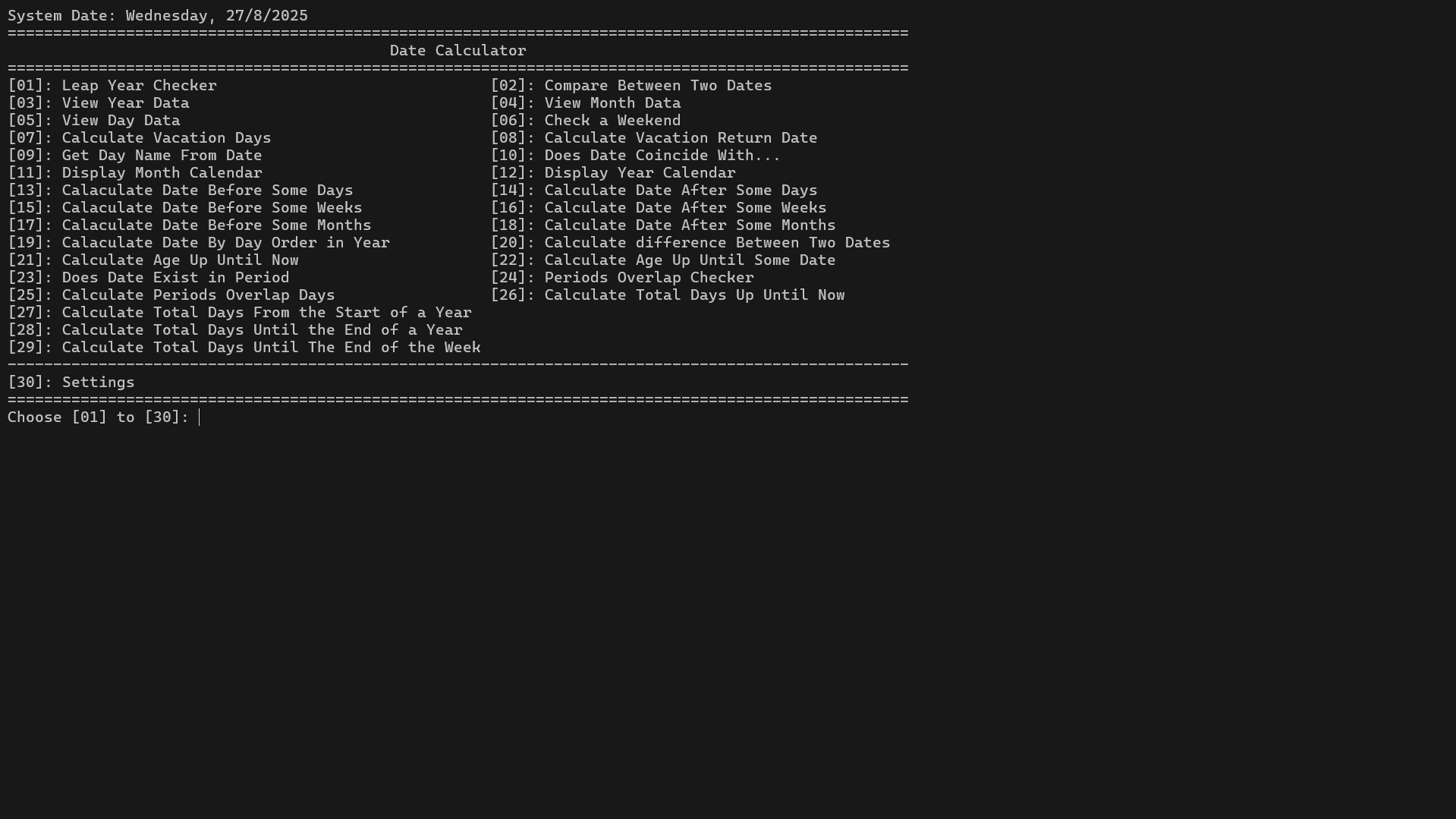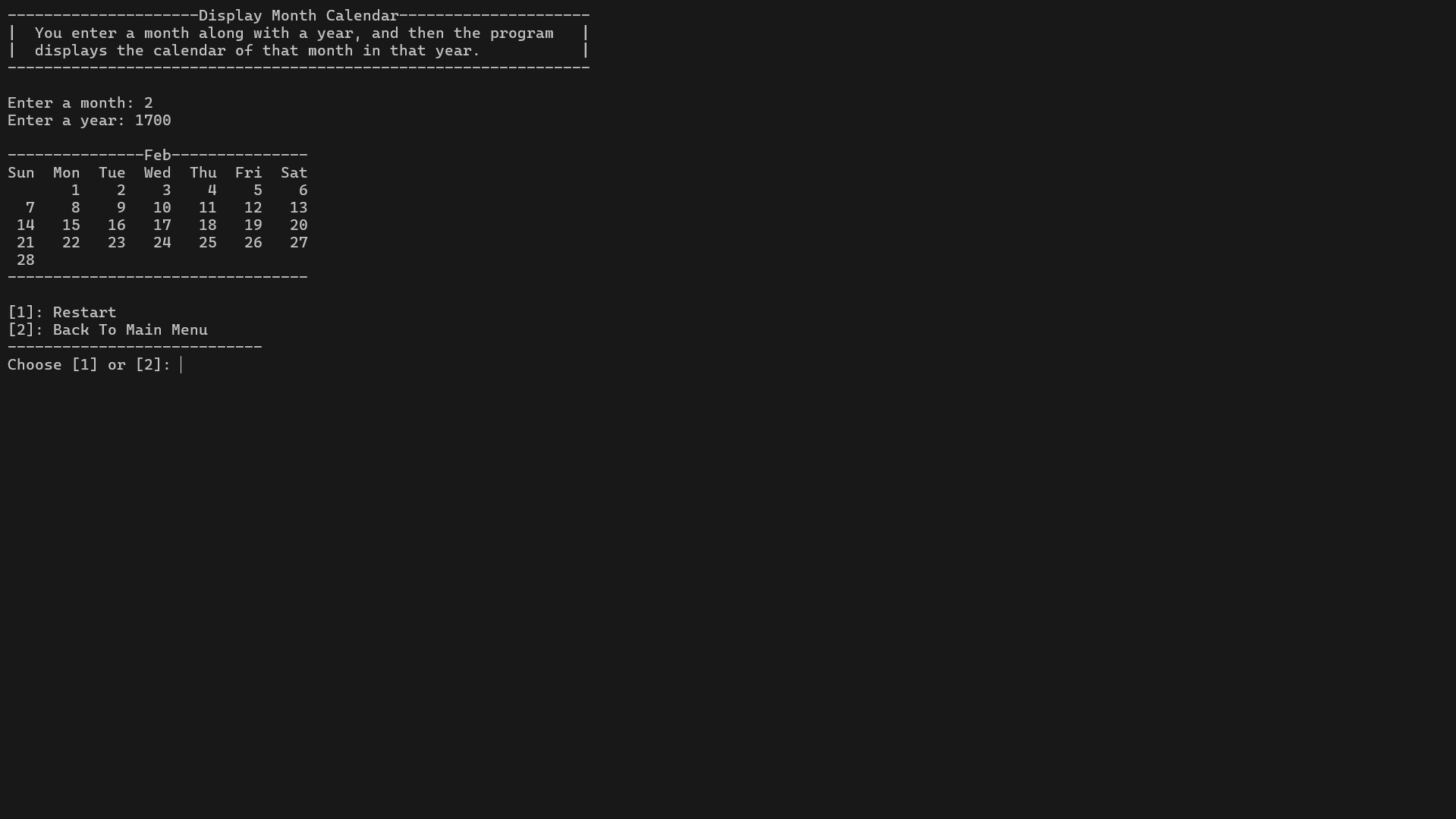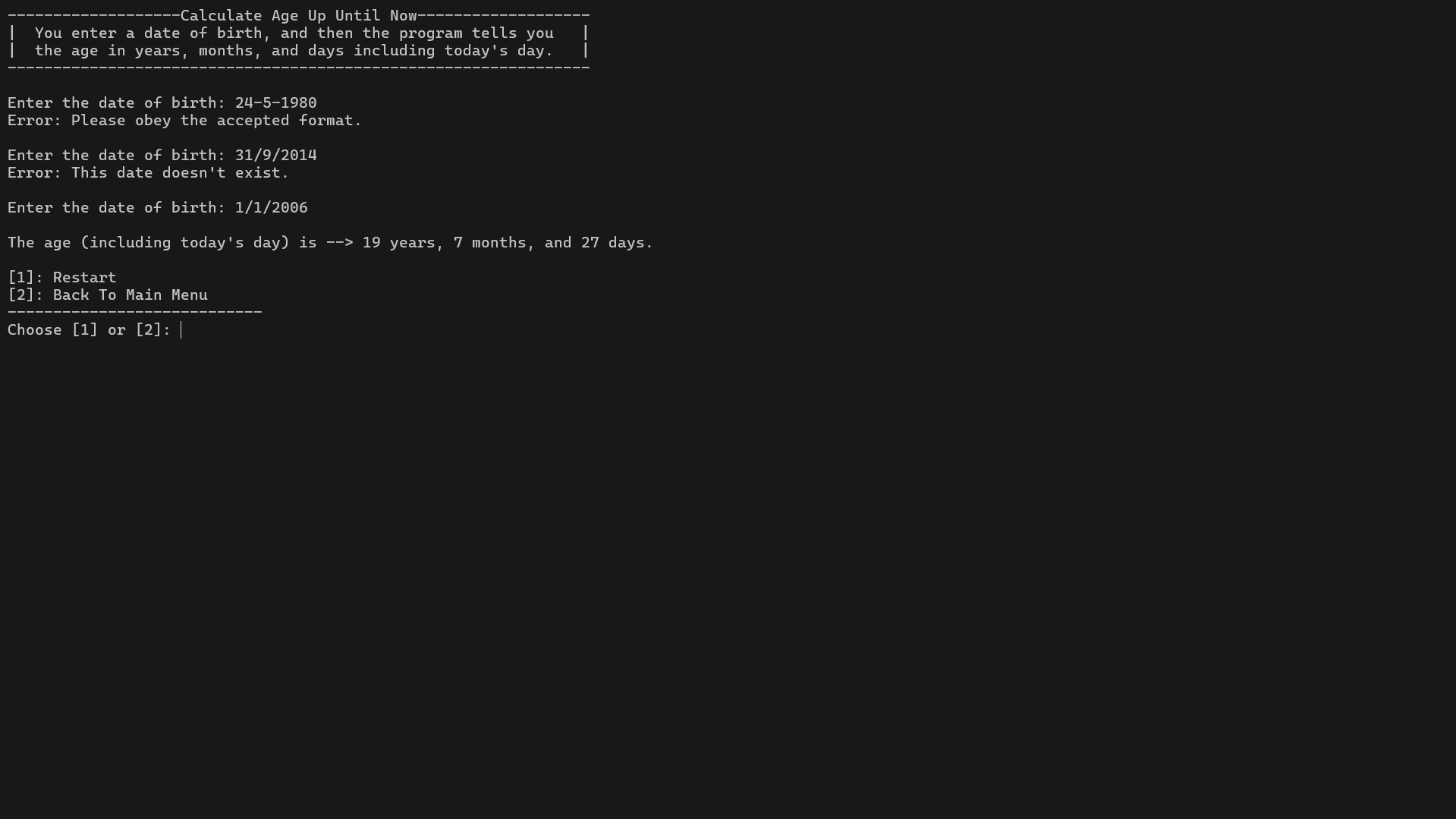Date Calculator
Description
The Date Calculator is a console-based application written in C++ that leverages a custom-built Dates.h library to provide a wide range of date operations. It serves as a practical demonstration of how to transform low-level date utilities into an interactive tool for end-users.
Users can perform complex date-related tasks like calculating the difference between two dates, finding future or past dates, and validating calendar input — all within a simple, menu-driven interface.
This project highlights not only the power of the Dates.h library but also how supporting libraries Readers.h, Files.h contribute to a robust, reusable, and modular system.
Technologies Used
- C++ — Core language for implementation.
- Custom Libraries:
Dates.h,Readers.h,Files.h. - Standard Libraries:
<iostream>,<iomanip>,<string>,<vector>. - Console-based UI — menu-driven, text-based navigation.
Functionality / Features
Core Date Analysis
- Leap Year Checker and Year/Month/Day Data: Quickly determine leap years, total days, and time units.
- Day of Week & Weekend Checks: Get the weekday name for any date, or verify if it falls on a weekend/holiday.
- Compare Dates: Tell if one date is before, after, or equal to another.
Date Navigation & Arithmetic
- Add/Subtract Time Units: Calculate future or past dates by days, weeks, or months (handles leap years and varying month lengths).
- Day Order in Year: Convert a “day number” (e.g., the 200th day) into an exact date.
- Vacation Tools: Compute total vacation days (excluding weekends) and calculate return dates automatically.
Calendars & Visuals
- Monthly and Yearly Calendars: Display formatted calendars directly in the console.
- Inclusive Counters: Show total days from start of year, until end of year, or until the week’s end.
Age & Period Calculations
- Age Calculator: Determine age up until today or a specific date, with full breakdown (years, months, days).
- Period Operations:
- Check if a date exists within a range.
- Detect if two ranges overlap.
- Calculate total overlap days between periods.
Customization & Settings
- Date Formats: Configure accepted formats (e.g.,
dd/mm/yyyy). - Weekend Rules: Define which days count as weekends.
- End-of-Week Setting: Customize when the week is considered to end.
Implementation Highlights
Modular Design with Reusable Libraries
- The application relies on the
Dates.hlibrary for all core date calculations. - Supporting libraries handle different concerns:
Readers.hensures robust, validated input handling.Files.hallows for persistent storage where needed.Utils.h(included inFiles.h) provides general-purpose helpers to reduce code duplication.
- This separation of concerns keeps the main application code clean, focusing on orchestration rather than low-level details.
Menu-Driven Console UI
- The program presents a clear, user-friendly menu with options to perform each type of calculation.
- The design mirrors real calculator workflows: the user selects an operation, provides inputs, and receives a formatted, easy-to-read result.
- Invalid inputs are handled gracefully — the program prompts again instead of crashing or producing incorrect results.
Input & Output Formatting
- Thanks to
Readers.hand<iomanip>, date inputs and outputs are presented in a standardized, human-readable format (e.g.dd/mm/yyyy). - This makes results consistent across different features.
Practical Demonstration of Dates.h
- While
Dates.hprovides the algorithms, the Date Calculatordemonstrates real-world application. - Transforms raw functions into a
toolthat someone can actually use day-to-day (e.g. checking deadlines, calculating due dates). - This separation of library vs. app shows skill in both low-level problem solving and high-level system design.
Conclusion
- Built a console-based application that turns raw date operations into an accessible, menu-driven tool.
- Showcased the value of modularity by integrating multiple self-built libraries (Dates, Readers, Files, Utils).
- Ensured a smooth user experience with input validation and consistent formatting.
- Highlighted practical skills in application orchestration, error handling, and reusable design.
- Demonstrated how to evolve a low-level library into a complete, user-facing program.
Screenshots



Try the Project
You can download the executable file for this project from here.
Since this application is not digitally signed by a recognized publisher, your system may display a warning before running it. You can safely ignore it and continue.